The Nothing Ear (a) are arguably the best earbuds under £100
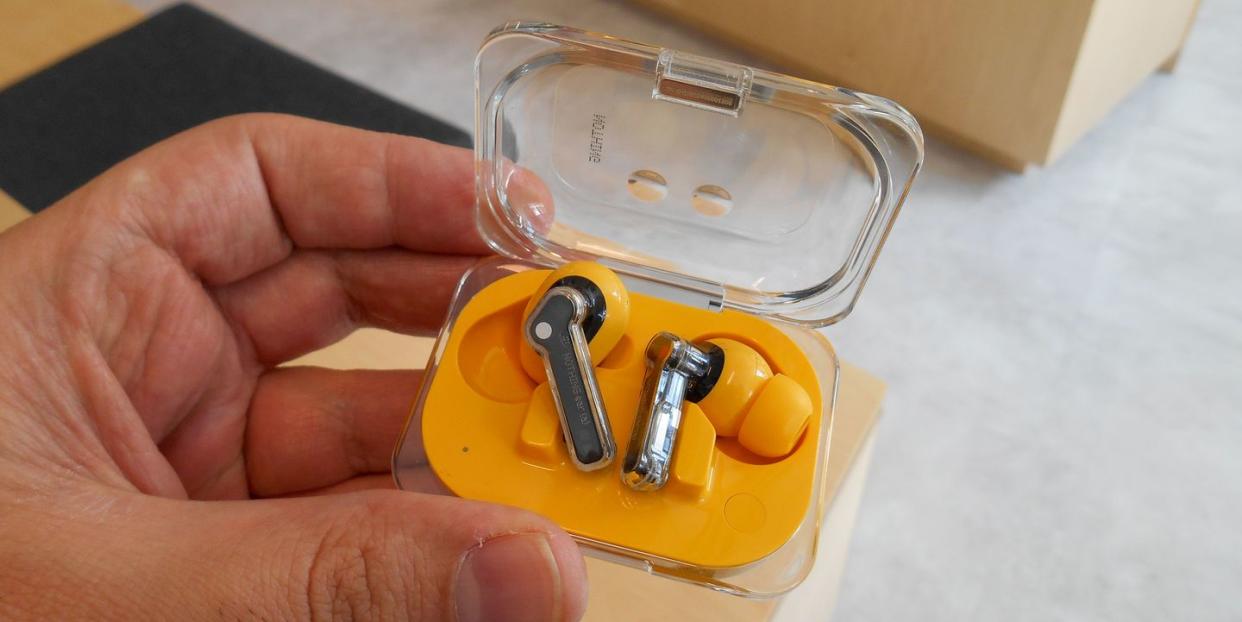
Since the launch of Nothing’s Ear (1), the brand has competed within the busy budget end of the true wireless earbuds market, where hundreds of rivals jostle for second place behind Apple’s ubiquitous AirPods. But, before the Ear (2) came out, the London-based startup had already had to ditch the £99 price tag on its flagship, with the Ear (2) launching at £129.
With the brand’s Community Update and the freshly announced refinement of the Nothing earphone range, it now has a true successor to the original Ear (1) at last in a sub-£100 pair of adorable buds. The Nothing Ear (a) are tiny and compact with a stylish transparent design and great sound. Read on for more of my early thoughts after a week of using them paired with the minimal Nothing Phone (2).
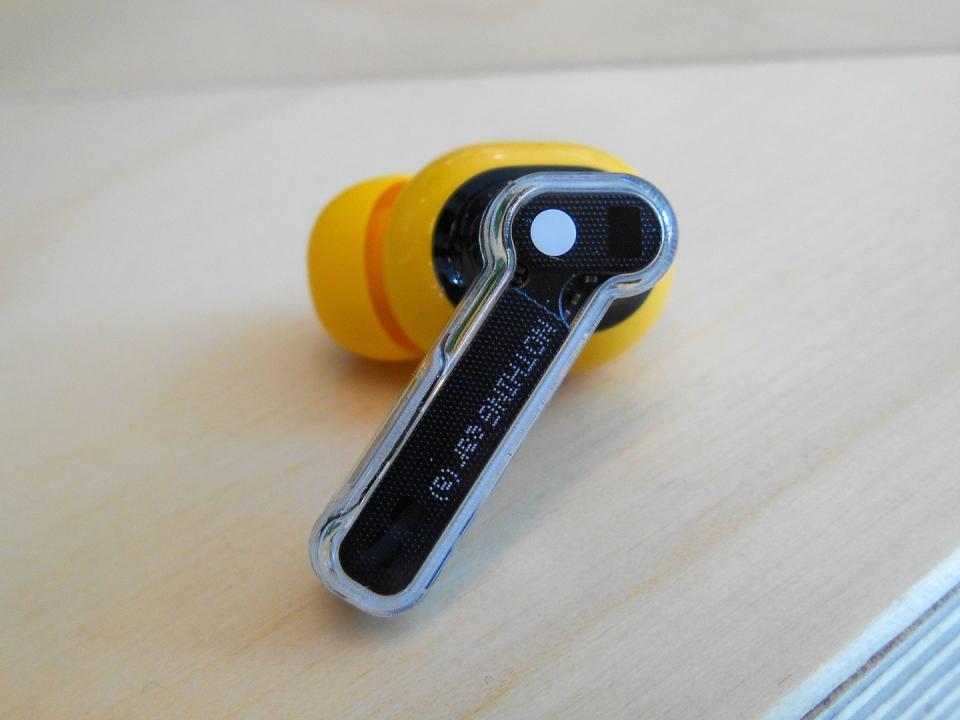
Nothing Ear (a): First impressions
In many ways, this is the big overhaul for the Nothing earbud lineup in 2024, replacing the Ear (Stick) as the “fun and affordable” model in the range. The Nothing Ear (a) has a new charging case for a super compact design, high-res audio support, and adaptive noise-cancelling – all for a terrific £99 price tag.
As anybody would be, I’d been wondering if there’s a catch, but it doesn’t feel like there’s a lot lacking here after a week of testing them out – while I miss wireless charging and some of the clever app-based extras you get with the new flagship Nothing Ear, these are excellent performers for the price, delivering sound quality, noise-cancelling and comfort to rival the top-tier brands.
Nothing Ear (a): Design and comfort
The Nothing Ear (a) comes in white, black and a new yellow shade that reminds us of Thunderbird 4. Unsurprisingly, they’re as big on transparency as any product from the brand, with a see-through lid to the pocketable case and clear plastic on the stems to show off the inner workings.
It might feel like a major departure that this is the brand’s first product that comes in a colour that isn’t some variation on black or white, but we don’t think it’s too much of a big deal especially given that there was a lot of red in the design of the Nothing Ear (Stick). I’ve been testing the new yellow colour, as you can tell, but if you go with either the white or the black, it’s unlikely you’d be able to tell the difference between them and other Nothing buds when just looking at the earphone unit itself.
The case has a different form factor but still a robust metal hinge and satisfying snap to close it – it does lack wireless charging, as mentioned, but is easy to refuel from the USB-C port at the back. There are a couple of parts of the case that feel a bit “first-gen product” and lack Nothing’s characteristic attention to detail – the magnetic clasp at the front is off-centre (shown in the below image), for example, and this plastic feels more prone to fingerprint marks. Not dealbreakers, but worth noting.
When it comes to buds themselves and comfort, it’s safe to say these follow the existing Nothing playbook of design that looks and feels a lot like the class-leading AirPods Pro in size and weight, just with that added industrial flair. They’re super comfortable to wear for hours, with a tiny design you won’t notice in your ears. You get the typical three ear tip sizes too. It’s enough for most people but rivals now offer a fourth extra-small size, which both these and the Nothing Ear don’t include. Almost full marks for comfort – they’re great for me, but might not suit everyone.
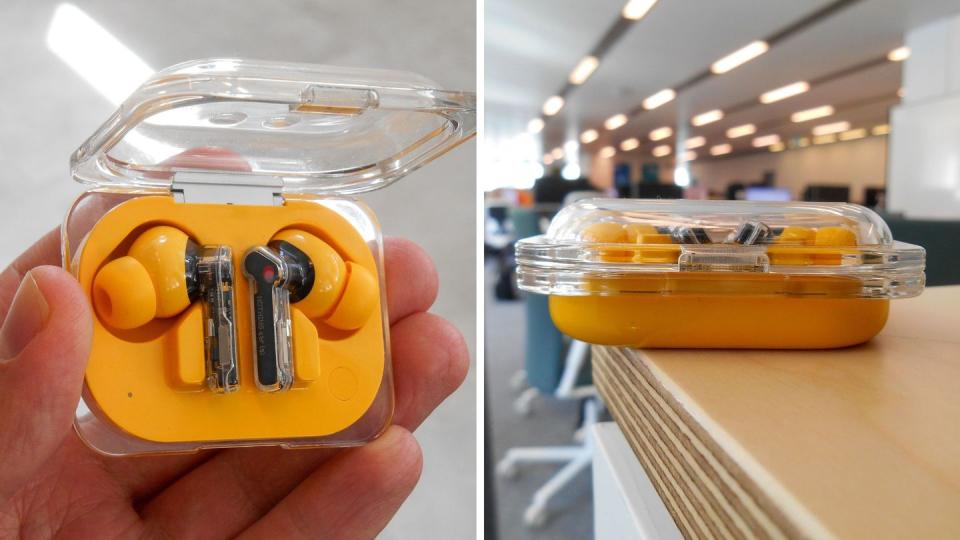
Nothing Ear (a): Sound and noise-cancelling
I’ve got to say, the audio quality these deliver is impressive. They don’t sound like most £99 in-ear headphones, offering a balanced, engaging signature that appeals to most listeners. As with the Ear from Nothing, I find them the most convincing once I’ve turned off the “bass enhance” feature that’s switched on by default with these – it’s too strong of a bass boost for my tastes, and there’s enough fullness to the low end without needing that on. Everyone’s different though, and if you appreciate the ability to add loads of thump to your playlists, go for it.
The dynamic driver material on the Ear (a) is made of PMI and TPU (so… plastic?) and isn’t as premium as the ceramic one in the revamped Ear, but I find it more than good enough to reproduce tunes without distortion, and these support the LDAC codec if you’re concerned about whether your high-res music from Tidal or Qobuz will technically sound its best.
The codecs don’t matter as much as the marketing would like you to believe, though – whether you’re listening to the highest bitrate LDAC supported on Android phones or AAC on iPhones, you probably won’t hear the difference. But these buds are well-built and well-tuned, and that’s what makes them sound a lot better than most of the budget-friendly competition in this category. To our ears, they sound a lot like last year’s Nothing Ear (2), which we still rate as top performers for dynamic sound, detail and clarity.
How about active noise cancellation (ANC) and transparency? These have the same ANC strength as the Ear model, and I’m not able to hear any difference between the two when using them on the busy London Underground and for silencing the din of the office. They’re great performers, but if you want seriously game-changing noise-cancelling, you’re going to have to consider options from Apple, Bose or Sony instead. The transparency is more of the same, it’s a solid mode for ambient awareness, but I wouldn’t use it while holding a conversation, which is something you can do with AirPods Pro.
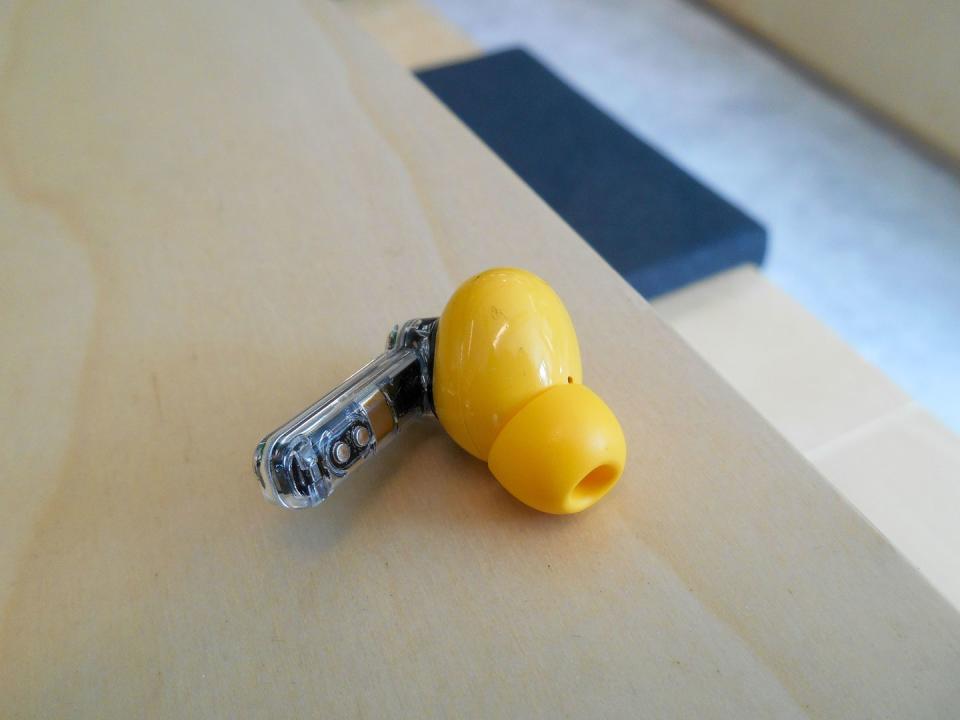
Nothing Ear (a): Controls and app features
When it comes to on-bud control, Nothing has stuck with the pinch system from the Ear (2) and Ear (Stick). This simple and intuitive approach isn’t far off from the way the AirPods Pro work, enabling you to squeeze the stems of the buds to control playback and switch between the ANC and transparency modes. Within the app, you can also enable an extra gesture for a “double-pinch and hold”, which we set to control volume (to lower volume on the left, and raise it with the right) – while this works, I find it requires faster squeezes than I’m used to on the AirPods, Nothing Ear (2) and Ear. It’s a touch fiddlier than I’d like, but potentially fixable with a firmware update.
These days, app control is essential for earbuds. Even if you just load it up to tweak the sound and get the controls working the way you want, it’s a big help. Every one of the pinch controls mentioned above is customisable in the Nothing X app, which has a clean and logical interface for personalising your buds.
You can change the level of noise-cancelling or set it to adapt to your environment, and you also get access to the low-lag mode (ideal for gamers), the LDAC high-res toggle, an eartip fit test and multipoint controls for dual connections. It’s shocking how many expensive earbuds still don’t have Bluetooth multipoint, which is a brilliant cross-platform feature for maintaining simultaneous connections and auto-switching to the device playing audio. It’s maddening that class-leading noise-cancellers like the Bose QuietComfort Ultra don’t have this feature.
There are a few notable missing features if you compare these side-by-side with the Nothing Ear as I have been. You won’t get a personal sound profile or hearing test, and there’s only the simple equaliser and no advanced equaliser. But, and be honest with yourself, were you ever going to use that anyway? I didn’t find myself missing the features too much. The sound capabilities of the Ear (a) are up there with those of the Ear, meaning both are competitive with the kind of buds aimed at serious audio enthusiasts. They sound fantastic, even without any fiddling and tweaking. Trust me, you’ll be satisfied with these.
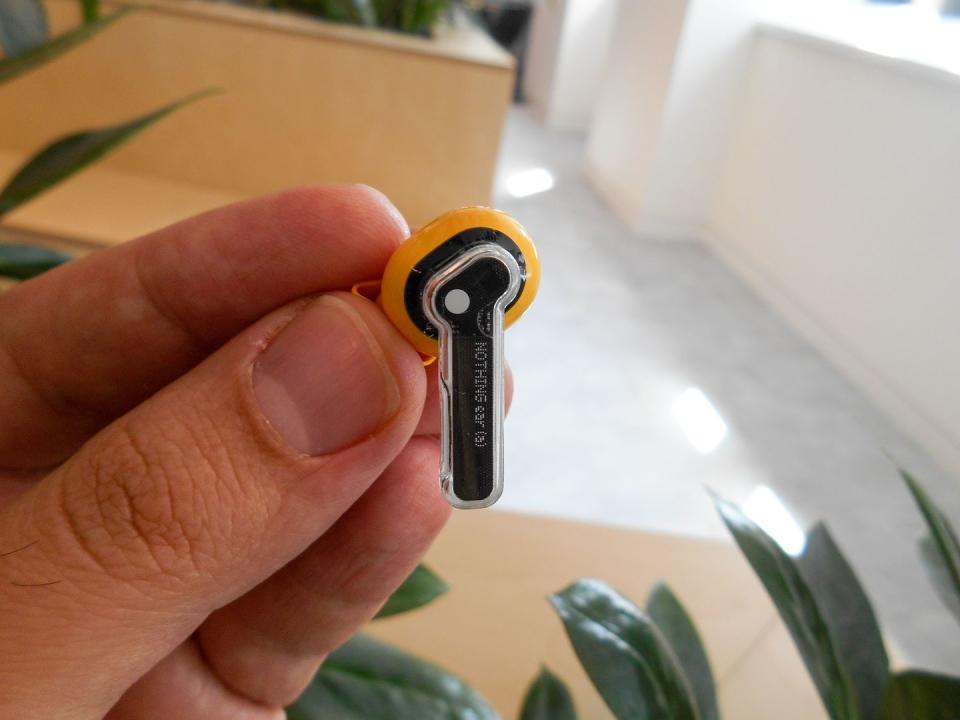
Nothing Ear (a): Battery life
These are small earbuds compared to a lot of the competition, so I don’t think anyone should be shocked that they’re not able to magic up loads of extra battery life. They claim to last just a smidge longer than the Nothing Ear, delivering a five-and-a-half-hour battery life with the ANC on. Add in the extra battery available from the charging case, and you’re looking at just over 24 hours of playtime. Given that most of us don’t leave earbuds in for an entire day, this is enough battery to keep you going. It’s also worth knowing that it gets even better with the ANC off, going up to nine and a half hours from the buds alone, and 42.5 hours with the case factored in.
I think it’s enough, and it’s competitive with the AirPods Pro which has a similarly compact form factor. Will it beat other rivals in this price tier? No, probably not. If you’re prepared to trade the compact design for more battery, you can get a lot more life from opponents like the Soundcore Liberty 4 NC or JBL Live Pro 2, but we find the combination of the sound, ANC and app features, along with the tiny size and cute bubble case appealing enough that we’d pick these over most close competitors.
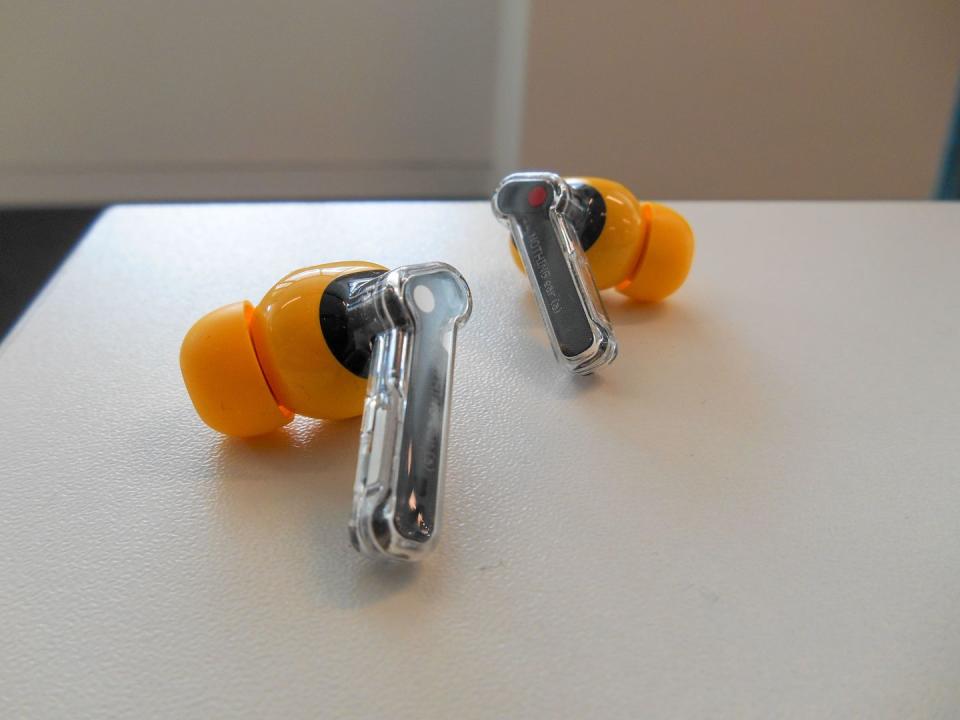
Nothing Ear (a) verdict
If it wasn’t already clear, I think these are fantastic little buds, and I’m amazed that they’re going for £99 at launch. The features here put them toe-to-toe with the Nothing Ear and we don’t think most users are going to miss the app-based features aimed at audiophiles or wireless charging. Beyond those feature omissions, the Ear (a) is super similar to the new Ear model and offers the same level of upgraded noise-cancellation, comfort and a much better battery life than the Ear or Ear (2).
Overall, the sound quality these pump out is far better than what you’d expect from most of the models that go for this price from other brands, and the reliable app delivers connectivity and features that, in some cases, we’re still waiting on from certain flagship earbuds that go for well over £200. The Nothing Ear (a) are fun, compact and affordable, at a sensible price that’ll make you feel like everyone else is being overcharged by the big brands.
You Might Also Like


